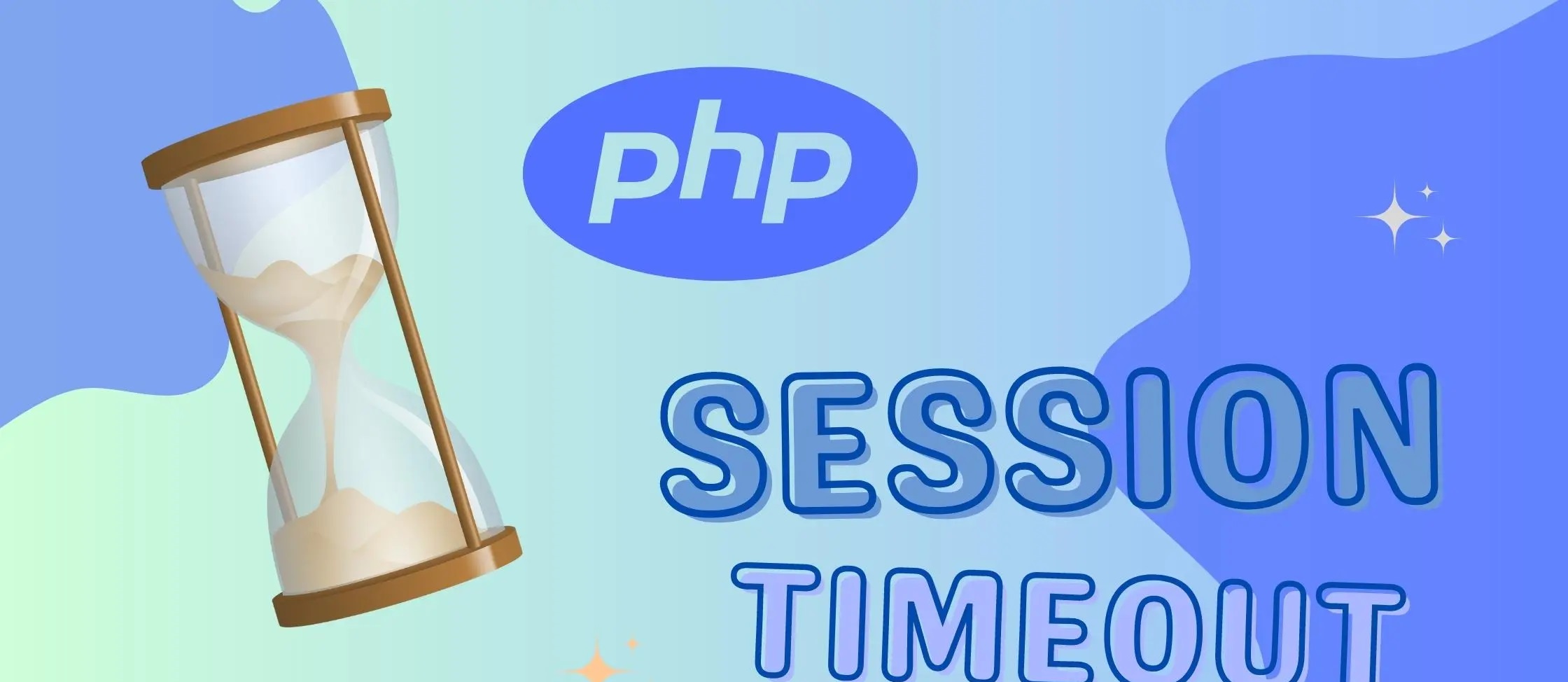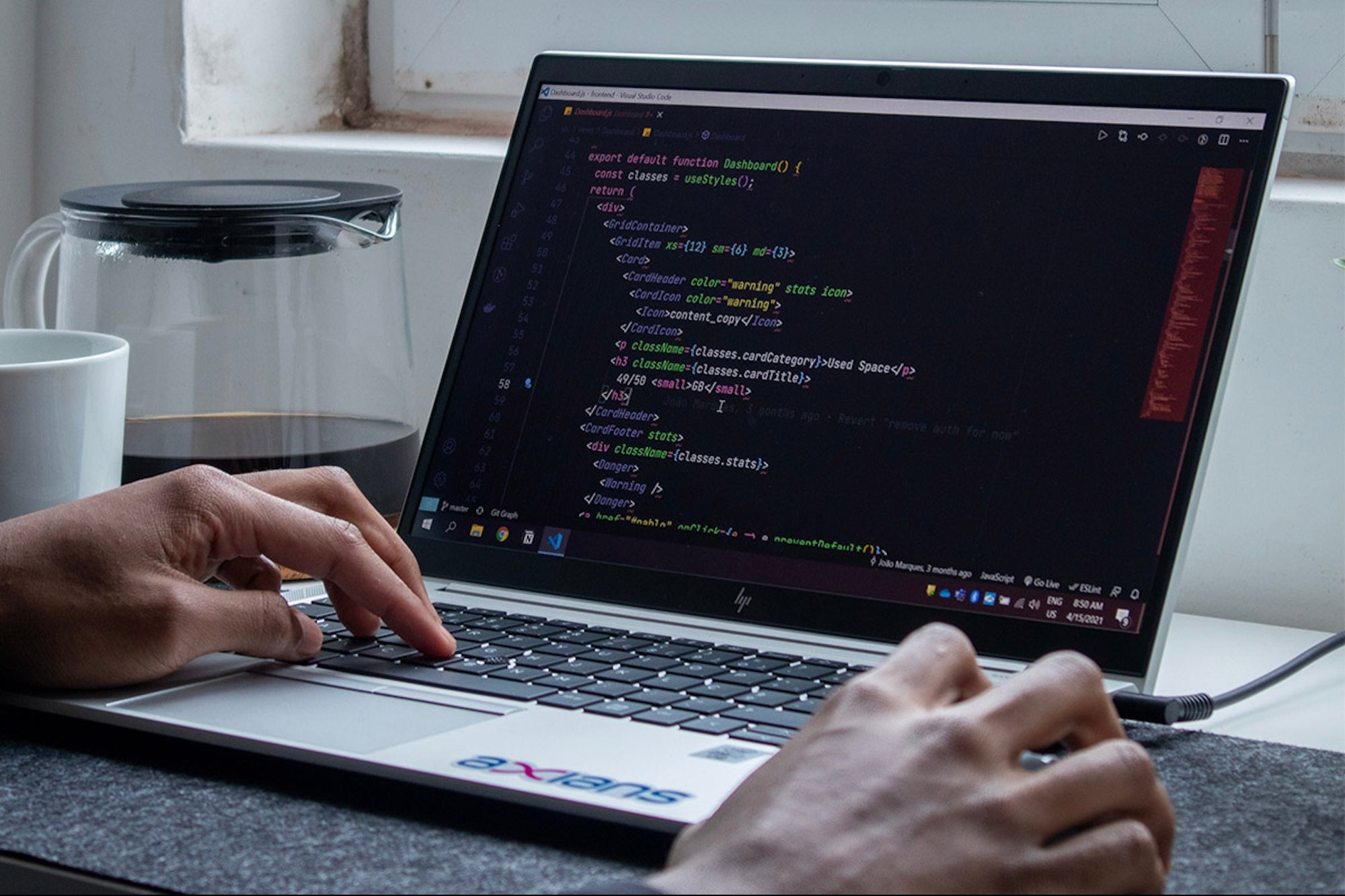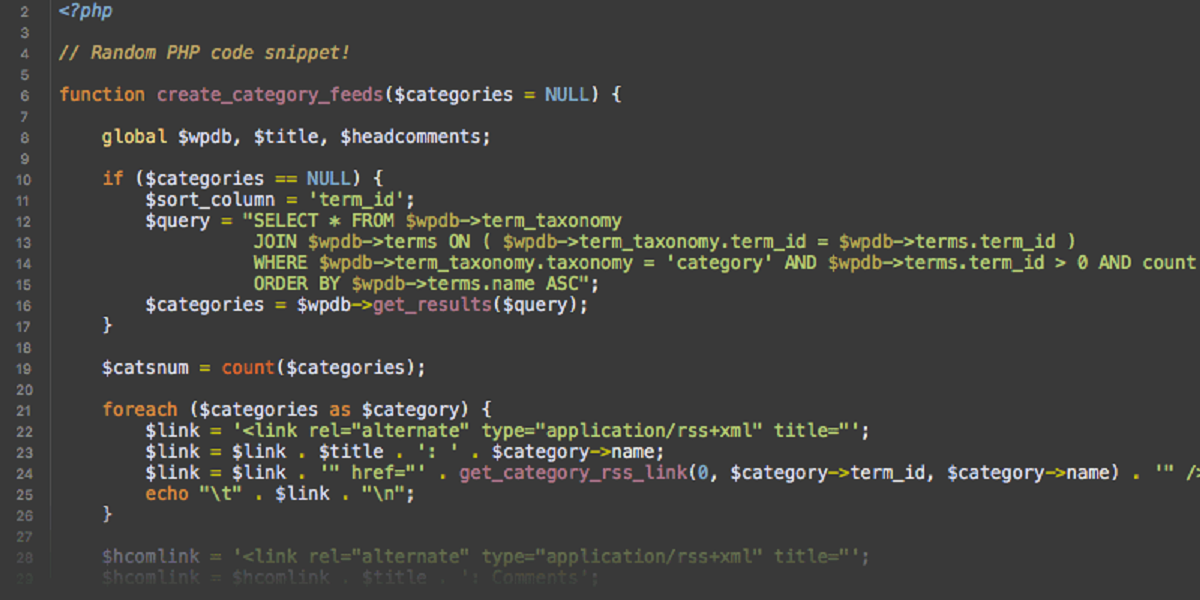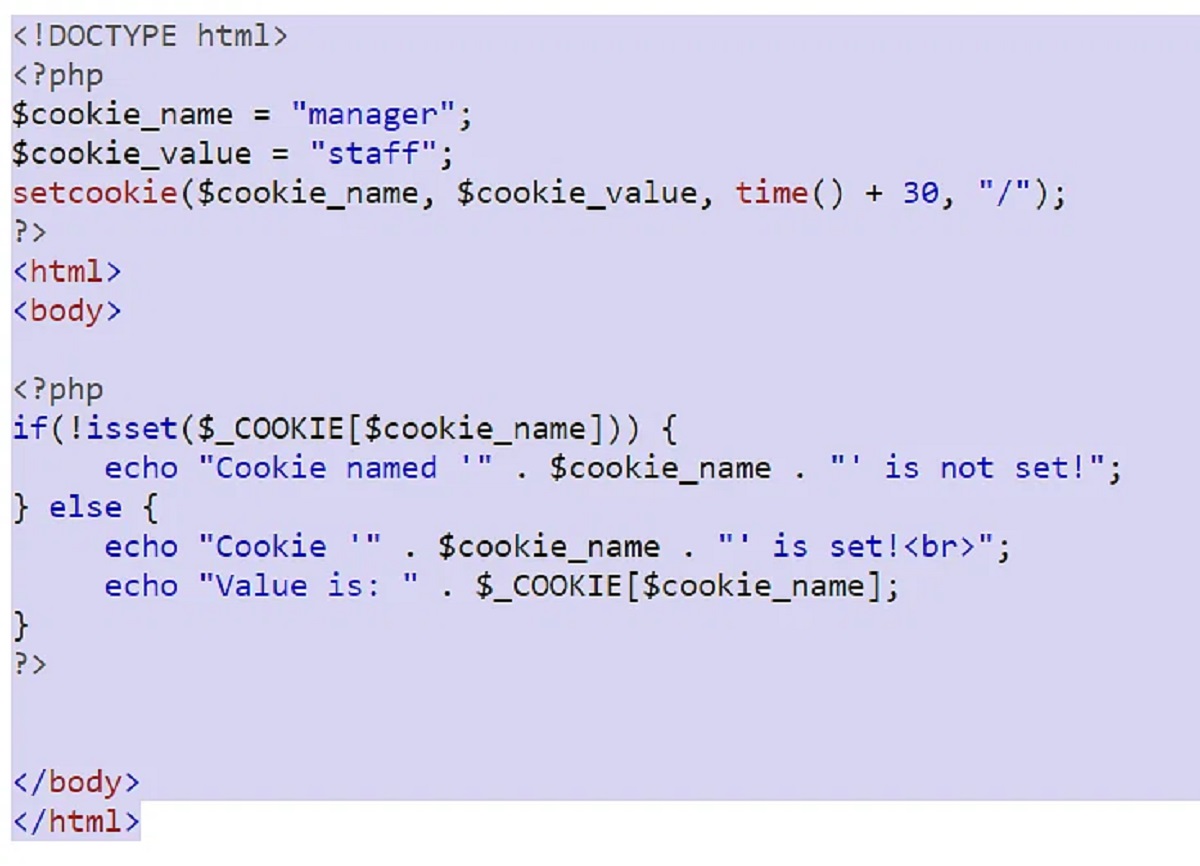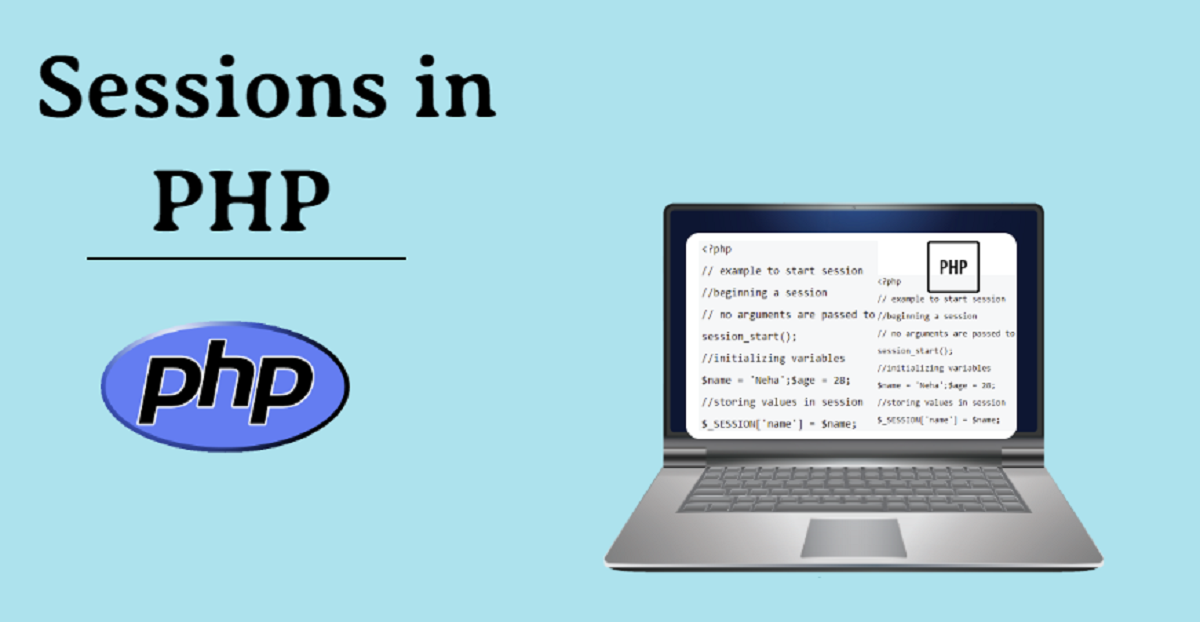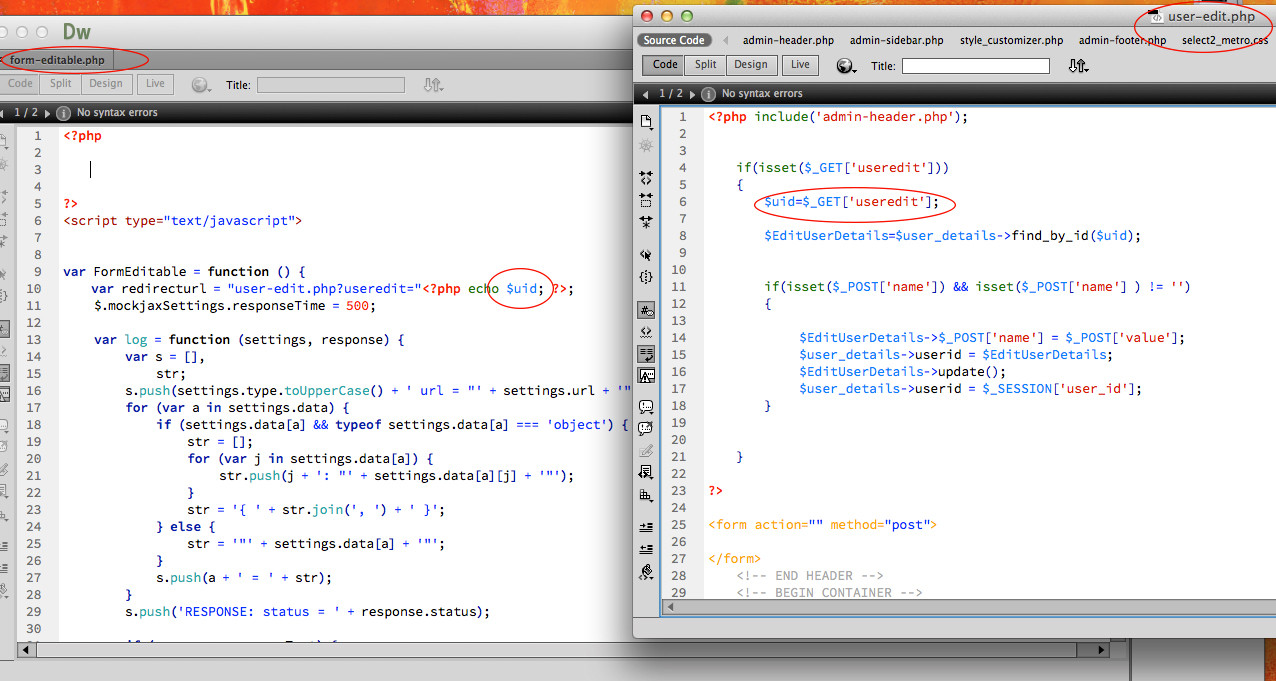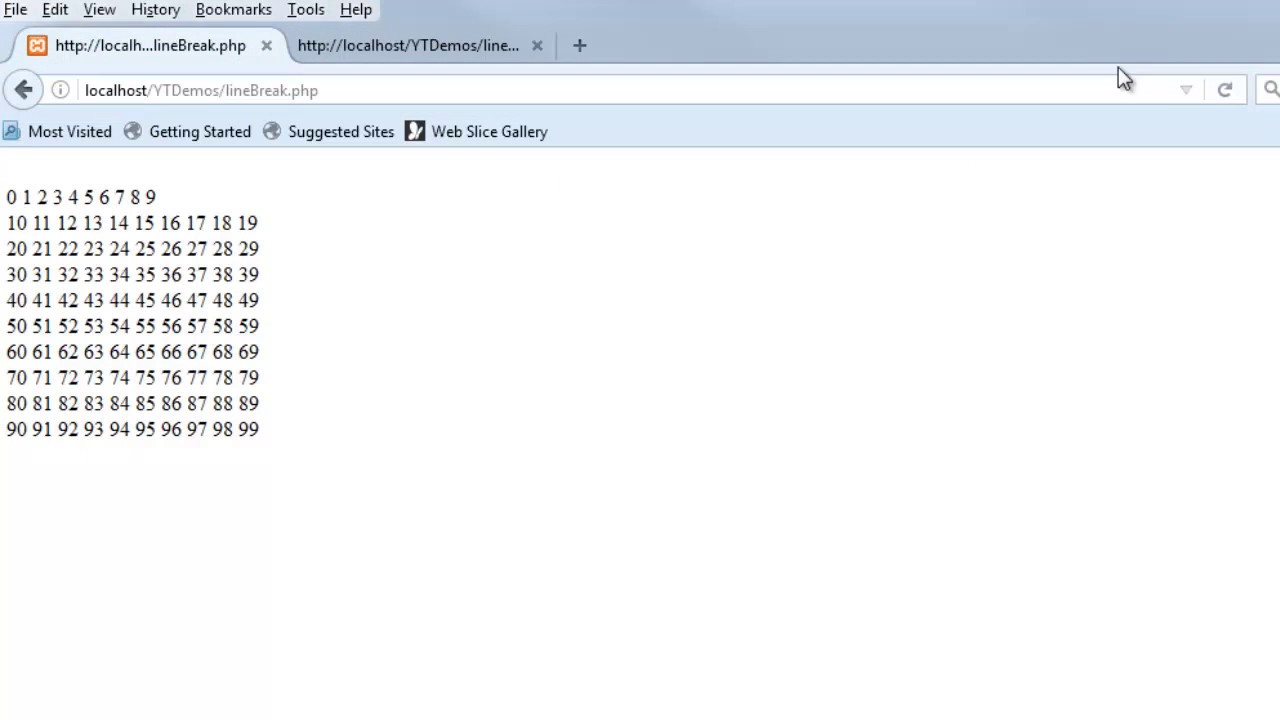Introduction
A PHP session is a crucial component of web development that allows websites to store and maintain user-specific information across different pages or interactions. It enables personalized experiences, such as remembering user preferences, tracking user activity, and securing sensitive data.
When a user visits a website, a unique session is created for them on the server. This session acts as a temporary storage space where the website can store and retrieve data related to that specific user during their browsing session. This eliminates the need for users to continuously provide their information or preferences as they navigate through the website.
Understanding how long a PHP session lasts is essential for developers and website administrators to optimize user experience and ensure the security of user data. In this article, we will explore the factors that determine the duration of a PHP session, including session timeout settings and other environmental factors. We will also provide examples and best practices for setting the session duration. So, let’s dive in and unravel the mysteries of PHP session durations!
What is a PHP session?
A PHP session is a mechanism that allows websites to maintain user-specific data throughout their browsing session. It provides a way to keep track of user interactions and personalize the website experience based on each user’s preferences and actions.
When a user visits a website, the server assigns them a unique session ID. This ID is typically stored as a cookie in the user’s browser. The session ID is crucial for identifying the user and associating them with their specific session data.
With a PHP session, developers can store and retrieve user information as needed. This information can include things like the user’s login status, shopping cart contents, language preferences, or any other data that needs to persist across different pages or interactions.
The session data is stored on the server-side, making it more secure compared to storing it on the client-side. This prevents users from tampering with their session data or accessing data from other users’ sessions.
PHP sessions provide a powerful tool for creating dynamic, personalized websites. They enable features such as customized content, remembering user actions, and implementing authentication systems. By utilizing sessions, developers can enhance the user experience, streamline interactions, and improve overall website functionality.
Now that we have a basic understanding of what a PHP session is, let’s move on to how these sessions are created.
How is a PHP session created?
A PHP session is created through a specific series of steps to ensure that each user is assigned a unique session ID and that their session data is securely stored on the server.
The session creation process typically involves the following steps:
- Starting a session: To initiate a session, a developer needs to start the session by calling the
session_start()function at the beginning of their PHP script. This function generates a session ID for the current user and begins the session. It also checks if there is an existing session for the user, and if so, resumes it instead of creating a new one. - Assigning session variables: After starting the session, developers can assign values to session variables, which can store information specific to the user. These session variables are accessed and manipulated throughout the user’s session. For example, a session variable can be used to store the user’s username or shopping cart items.
- Accessing session data: During the user’s session, the session ID is typically stored as a cookie in their browser. The server uses this session ID to associate the user with their session data. Developers can access the session data by using the
$_SESSIONsuperglobal array. This array contains all the session variables and their respective values. - Destroying the session: Once the user’s session is no longer needed, it is essential to properly destroy it to free up server resources. This can be done by calling the
session_destroy()function. This function removes all session data and ends the current session. It is important to note that destroying a session does not delete the session data stored on the server; it simply removes the association between the user and their session data.
Overall, the process of creating a PHP session involves starting the session, assigning and accessing session variables, and properly destroying the session when it is no longer needed. By following these steps, developers can effectively utilize PHP sessions to enhance the functionality and personalization of their websites.
Now that we understand how a PHP session is created, let’s delve into the duration of a PHP session and the factors that affect it.
How long does a PHP session last?
The duration of a PHP session can vary depending on several factors. By default, a PHP session lasts until the user closes their browser or until they manually logout from the website. This is known as a “browser-session” or “session-cookie” lifespan.
During a browser-session lifespan, the session data is stored on the server, but the session ID is typically stored as a cookie in the user’s browser. When the user closes their browser, the cookie containing the session ID is deleted, and the session is considered ended. The next time the user visits the website, a new session will be created for them.
However, it’s important to note that this default session lifespan may not be suitable for all scenarios. In some cases, you may want the session to last for a longer duration, allowing users to revisit the website and resume their session even after closing their browser.
To extend the duration of a PHP session beyond the browser-session lifespan, developer intervention is required. This can be achieved by implementing session timeout settings or customizing the expiration time of the session cookie.
Session timeout is a mechanism that automatically ends a session after a specified period of inactivity. This is typically done by setting a timeout duration, after which the session is considered expired and the user is logged out. By implementing session timeouts, you can enhance security and prevent unauthorized access to user sessions.
Another way to control the duration of a PHP session is by customizing the expiration time of the session cookie. By default, the session cookie is a “session cookie,” which means it expires when the browser is closed. However, you can set a specific expiration time for the session cookie to make the session last longer, even beyond a single browser session.
It’s essential to strike a balance when determining the session lifespan. A session that lasts too short may result in users having to constantly log in or re-enter their preferences, while a session that lasts too long may pose security risks if a user forgets to log out or if their device is compromised.
Now that we understand the factors that can affect the duration of a PHP session, let’s explore how session timeout settings can be implemented.
Factors that affect the duration of a PHP session
The duration of a PHP session can be influenced by various factors, including:
- Session timeout settings: As mentioned earlier, session timeout is a crucial factor that affects the lifespan of a PHP session. Setting a session timeout determines how long a session can remain inactive before it is automatically ended. By defining a specific timeout duration, developers can balance security and user convenience.
- User activity: The duration of a PHP session can be influenced by the user’s activity on the website. If a user is actively interacting with the website, their session is likely to last longer. This is because each interaction with the server, such as loading a new page or submitting a form, can refresh the session and extend its duration.
- Session cookie expiration: By default, the session ID is stored as a cookie in the user’s browser. If the session cookie has a specific expiration time set, it can control the lifespan of the session. For example, if the session cookie is set to expire after a week, the session will last for that duration, regardless of whether the user closes their browser or not.
- Manual logout: In addition to the factors mentioned above, the user can manually log out from their session. When a user logs out, the session is immediately ended, regardless of the other factors. Manual logout allows users to have more control over the duration of their session and can be useful for security purposes.
- Server configuration: The configuration of the server hosting the website can also affect the duration of a PHP session. Server settings, such as the session.gc_maxlifetime parameter in the PHP configuration, can define the maximum duration for which a session can be active. This helps ensure that sessions do not remain active indefinitely on the server.
By taking these factors into consideration, developers can fine-tune the duration of PHP sessions to meet the specific needs of their website and its users. Striking the right balance between convenience and security is crucial in providing a seamless and personalized user experience.
Next, let’s explore how session timeout settings can be implemented to control the duration of a PHP session.
Session timeout
Session timeout is a crucial aspect when determining the duration of a PHP session. It refers to the period of inactivity after which a session is considered expired and the user is logged out.
Implementing session timeout helps to balance security and user experience. By setting a reasonable timeout duration, you can prevent unauthorized access to user sessions, protect sensitive data, and reduce the risk of session hijacking.
There are several approaches to configuring session timeout:
- Default timeout: Many server configurations have a default session timeout value, usually measured in minutes. This timeout applies to all PHP sessions unless explicitly overridden.
- Custom timeout: You can customize the session timeout to meet the specific needs of your website. This allows you to define a timeout duration that aligns with the nature of your application and the behavior of your users. For example, an e-commerce website may have a shorter session timeout to ensure the security of payment-related information.
- Idle timeout: An idle timeout specifies the duration of inactivity after which a session is considered expired. If a user doesn’t interact with the website for the specified idle timeout period, their session is automatically ended. This can be particularly useful for scenarios where users may leave their sessions unattended.
- Countdown timer: Another approach is to utilize a countdown timer that displays the remaining time before the session expires. This countdown timer can remind users to interact with the website or give them the option to extend their session before it times out.
When implementing session timeout, it’s important to strike a balance that considers both security and user convenience. If the timeout is too short, users may be frequently logged out, resulting in inconvenience and frustration. On the other hand, if the timeout is too long, it increases the risk of unauthorized access to user sessions.
By effectively implementing session timeout settings, you can create a secure environment for your users while ensuring a smooth and tailored experience on your website. In the next section, we will explore how to set the duration of a PHP session.
Setting the session duration
Setting the duration of a PHP session involves configuring the session timeout and the expiration time of the session cookie. By adjusting these settings, you can control how long a session remains active for a user.
To set the session timeout, you can utilize the session.gc_maxlifetime directive in the PHP configuration or modify it programmatically using the ini_set() function. This directive specifies the maximum duration, in seconds, for which a session can remain active. Once this duration is exceeded, the session is considered expired and the user will be logged out.
For example, to set the session timeout to 30 minutes, you can add the following line in your PHP code:
ini_set('session.gc_maxlifetime', 1800);Additionally, you can configure the expiration time of the session cookie to extend the session duration beyond a single browser session. The session cookie is typically set to expire when the browser is closed, but you can modify it to have a specific expiration time.
The expiration time of the session cookie can be set using the session_set_cookie_params() function, specifying the lifespan of the cookie in seconds. Here’s an example:
session_set_cookie_params(86400); // Set session cookie to expire after 24 hoursBy customizing the session cookie expiration time, you allow users to return to your website and resume their session even after closing their browser, as long as the cookie remains valid.
It’s worth noting that both the session timeout and the session cookie expiration time need to be adjusted to achieve the desired session duration. If the session timeout is shorter than the session cookie expiration time, the session can still be active even after the timeout if the user’s session cookie remains valid.
When setting the session duration, it’s important to consider factors such as the nature of your website, the sensitivity of the data being stored in the session, and the typical duration of user sessions. Striking the right balance between security and user convenience is crucial to providing an optimal experience for your website visitors.
Now that we have explored how to set the duration of a PHP session, let’s move on to examples of session durations in different scenarios.
Examples of session durations
The duration of a PHP session can vary based on the specific needs and requirements of your website or application. Here are some examples of session durations in different scenarios:
- Short session duration: In some cases, it may be necessary to have a short session duration to prioritize security. For example, in a banking application, a session may only last for a few minutes of inactivity to minimize the risk of unauthorized access to sensitive financial information.
- Medium session duration: Many websites opt for a medium session duration that strikes a balance between security and user convenience. A session duration of around 30 minutes to 1 hour is common in scenarios where users frequently interact with the website but don’t need prolonged sessions, such as e-commerce websites or social media platforms.
- Extended session duration: In certain situations, it may be beneficial to have a longer session duration. For instance, a web-based application with extensive form-filling or data entry requirements may have a session duration of a few hours or even a full day, enabling users to work continuously without frequent interruptions.
- Remember me option: Some websites offer a “Remember Me” feature that allows users to remain logged in for an extended period, even after closing their browser. This is often achieved by utilizing a persistent cookie with a longer expiration time, spanning multiple days or even weeks.
It’s important to tailor the session duration to the specific needs of your users and the nature of your website/application. By carefully considering factors such as the sensitivity of the data, frequency of user interactions, and user expectations, you can choose an appropriate session duration that balances security and user convenience.
Remember, session duration is not a one-size-fits-all setting, and it may require adjustment based on user feedback, analytics, or changes in your application’s requirements.
Now that we have explored examples of session durations, let’s wrap up our discussion on PHP sessions.
Conclusion
Understanding the duration of a PHP session is essential for website developers and administrators who want to optimize user experience and ensure the security of user data. By controlling the duration of a PHP session, you can strike a balance between convenience and security, providing a seamless and personalized browsing experience.
In this article, we learned that a PHP session lasts until the user closes their browser or manually logs out. However, the session duration can be customized through session timeout settings and the expiration time of the session cookie.
We discussed the factors that affect the duration of a PHP session, including session timeout settings, user activity, session cookie expiration, manual logout, and server configurations. By considering these factors, developers can determine the optimal session duration for their website or application.
Furthermore, we explored how to set the session duration by adjusting the session timeout and the expiration time of the session cookie. This allows for customization based on specific requirements, such as implementing a short session duration for sensitive applications or extending the session duration for user convenience.
In different scenarios, we examined examples of session durations ranging from short durations prioritizing security to longer durations to accommodate extensive user interactions or incorporate a “Remember Me” feature.
By understanding and effectively managing the duration of PHP sessions, developers can create websites that meet the needs of their users, provide a personalized experience, and ensure the security of session data.
So, whether you’re building an e-commerce platform, a social media network, or any other web application, remember to consider the duration of PHP sessions as an important aspect of your development process.







